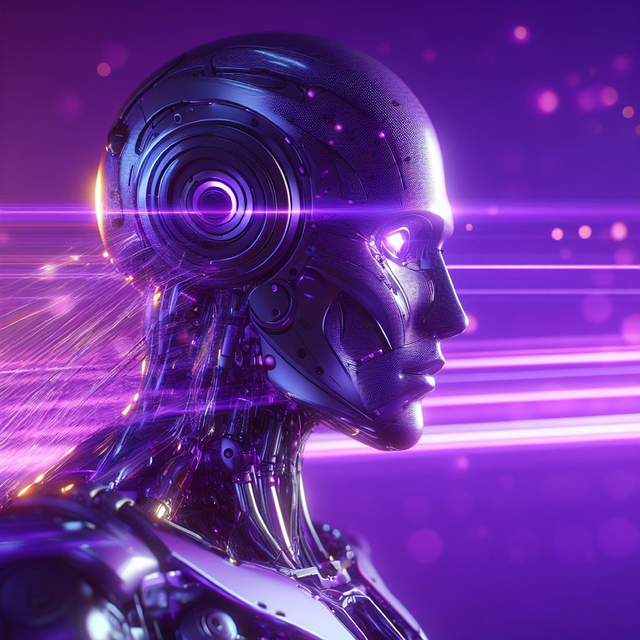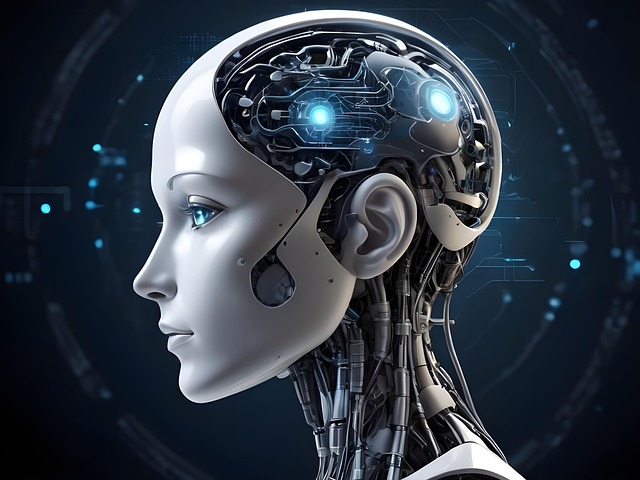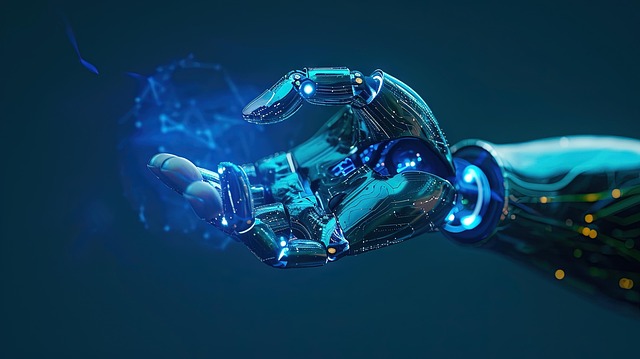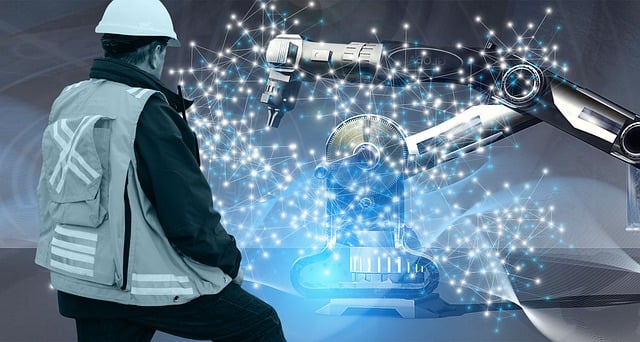Artificial intelligence (AI) has transformed customer support through AI chatbots that offer 24/7 service, swift responses, and precise issue resolution using natural language processing (NLP). These intelligent assistants evolve over time through machine learning, handling simple tasks, offering product insights, and escalating complex issues. Implementation involves defining objectives, assessing processes, choosing an AI solution, training with quality data, testing, seamless integration, and agent training. Training a virtual assistant is an iterative process involving continuous optimization based on customer interactions, feedback, and KPI measurements such as satisfaction scores, resolution times, error rates, and conversation audits to ensure optimal performance.
- The Rise of AI Chatbots in Customer Support
- Understanding the Benefits of Artificial Intelligence
- Key Features of an Efficient AI Chatbot
- Implementing AI: A Step-by-Step Guide
- Training and Optimizing Your Virtual Assistant
- Measuring Success: Evaluating AI Chatbot Performance
The Rise of AI Chatbots in Customer Support

In recent years, there has been a significant shift in customer support dynamics with the advent and rapid evolution of Artificial Intelligence (AI) chatbots. These virtual assistants are no longer a futuristic concept but an integral part of modern customer service strategies. The rise of AI chatbots is primarily driven by their ability to provide instant, 24/7 support, handle a high volume of queries simultaneously, and offer personalized interactions at scale. With natural language processing capabilities, these bots can understand complex user requests, deliver accurate responses, and even learn from each interaction, continually improving their performance.
The efficiency gained from AI chatbots translates to enhanced customer satisfaction as response times are significantly reduced, and users receive quick solutions to their problems. Moreover, businesses can allocate their human resources more effectively, focusing on more nuanced issues while leaving routine tasks to the chatbots. This marriage of technology and customer service is revolutionizing industries worldwide, setting new standards for expectation and delivery in terms of support services.
Understanding the Benefits of Artificial Intelligence

Artificial intelligence (AI) has transformed numerous industries, and customer support is no exception. By leveraging AI chatbots, businesses can significantly enhance their service capabilities. These intelligent assistants offer 24/7 availability, instant response times, and consistent accuracy in handling a wide range of queries. With natural language processing (NLP), AI chatbots can understand and interpret human language, providing personalized and context-aware support.
Moreover, AI technology allows these chatbots to learn and adapt over time, improving their performance through machine learning algorithms. They can manage simple tasks, offer product recommendations, guide users through troubleshooting, and even escalate complex issues to human agents when needed. This not only improves customer satisfaction but also reduces the workload on human customer support staff, enabling them to focus on more challenging and sensitive cases.
Key Features of an Efficient AI Chatbot

An efficient AI chatbot for customer support should offer seamless and intelligent interactions, understanding user queries and providing relevant responses. Key features include advanced Natural Language Processing (NLP) capabilities to interpret diverse customer inputs accurately and contextually. This enables the chatbot to deliver personalized assistance, tailoring its communication based on individual needs and preferences.
Additionally, robust knowledge bases integrated with machine learning algorithms empower chatbots to access vast stores of information swiftly. They can learn from user interactions, continuously improving their performance over time. Proactive problem-solving, where the chatbot anticipates customer issues and offers solutions before inquiries are fully expressed, enhances efficiency. Features like multilingual support and 24/7 availability further ensure excellent customer satisfaction across global markets.
Implementing AI: A Step-by-Step Guide

Implementing AI for customer support services is a strategic move that can significantly enhance operational efficiency and customer satisfaction. Here’s a step-by-step guide to help organizations embark on this journey:
1. Define Objectives: Begin by clearly outlining your goals. Are you aiming to reduce response times, improve accuracy, or provide 24/7 support? Setting specific objectives will guide the AI implementation process and help in measuring success later.
2. Assess Existing Processes: Evaluate your current customer support workflows, including common queries, communication channels, and existing tools. Identifying pain points and understanding agent workloads can inform which areas AI assistance would be most beneficial.
3. Choose an AI Solution: Explore various Artificial Intelligence options tailored for customer support, from rule-based chatbots to advanced machine learning models. Consider your budget, technical capabilities, and the complexity of queries you anticipate.
4. Data Preparation: AI thrives on quality data. Gather and prepare relevant datasets, including past customer interactions, FAQs, product knowledge bases, and any other material that can train and enhance your AI model’s performance.
5. Train and Test: Utilize machine learning algorithms to train the AI model using prepared data. Rigorously test its performance across different scenarios, refining its capabilities as needed. This iterative process ensures the AI agent becomes increasingly accurate and effective in handling customer inquiries.
6. Integration and Deployment: Seamlessly integrate your AI chatbot into existing support systems and communication channels. Ensure a smooth transition by providing adequate training to agents and introducing the new system gradually to minimize disruptions and allow for adjustments.
Training and Optimizing Your Virtual Assistant

Training a virtual assistant powered by artificial intelligence (AI) is an iterative process, requiring continuous optimization to ensure its performance aligns with customer expectations. Initially, the AI chatbot is trained on vast datasets containing various customer inquiries and responses. This training allows it to learn patterns, understand context, and generate appropriate replies. However, as the chatbot interacts with real users, it becomes evident that not all conversations go as planned. At this stage, human oversight plays a crucial role in refining the AI’s capabilities.
Optimization involves several techniques, including fine-tuning algorithms, expanding training data to include diverse scenarios, and adjusting parameters based on user feedback. By regularly reviewing customer interactions and identifying areas where the chatbot falls short, developers can enhance its understanding of nuanced language, improve response accuracy, and tailor its tone to match brand guidelines. This ongoing learning process ensures that the virtual assistant not only meets but exceeds customer support standards, providing efficient, effective, and satisfying assistance every step of the way.
Measuring Success: Evaluating AI Chatbot Performance

Measuring success in an AI chatbot for customer support involves a multifaceted approach, as performance is assessed beyond simple response accuracy. Key metrics include customer satisfaction scores, which gauge how well the chatbot addresses inquiries and whether it provides a helpful, pleasant experience. Efficiency is also critical; monitoring the time taken to resolve queries, queue times, and agent assistance can highlight areas where the chatbot streamlines processes or requires adjustments.
Additionally, tracking conversion rates – such as guiding customers through purchasing processes or providing necessary information for self-service – demonstrates the chatbot’s ability to meet business objectives. Error rates, feedback from both customers and human agents, and regular audits of conversation transcripts further refine performance evaluations. This continuous improvement cycle ensures the AI chatbot remains effective in a dynamic customer support landscape, leveraging Artificial Intelligence to deliver optimal service.






